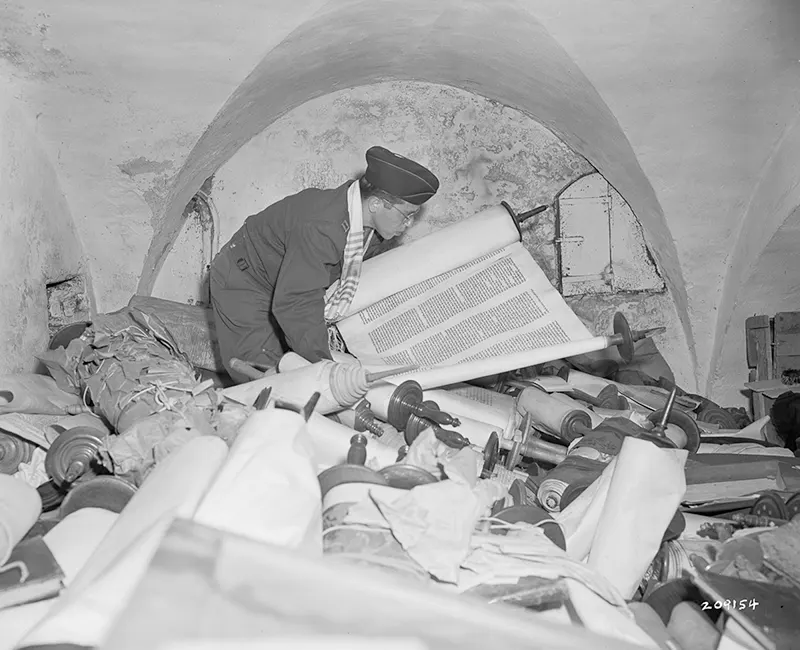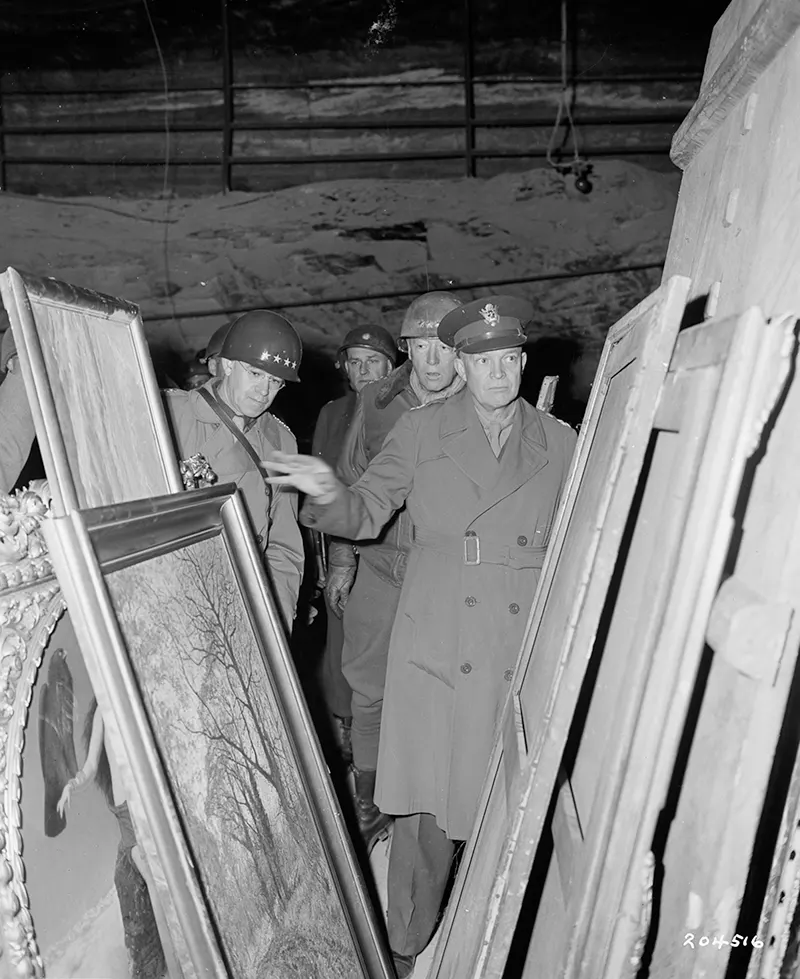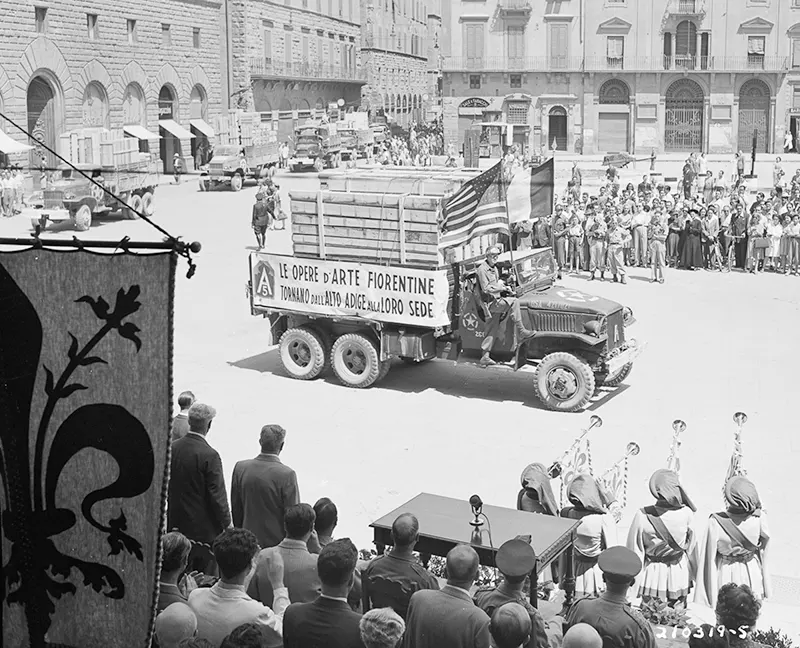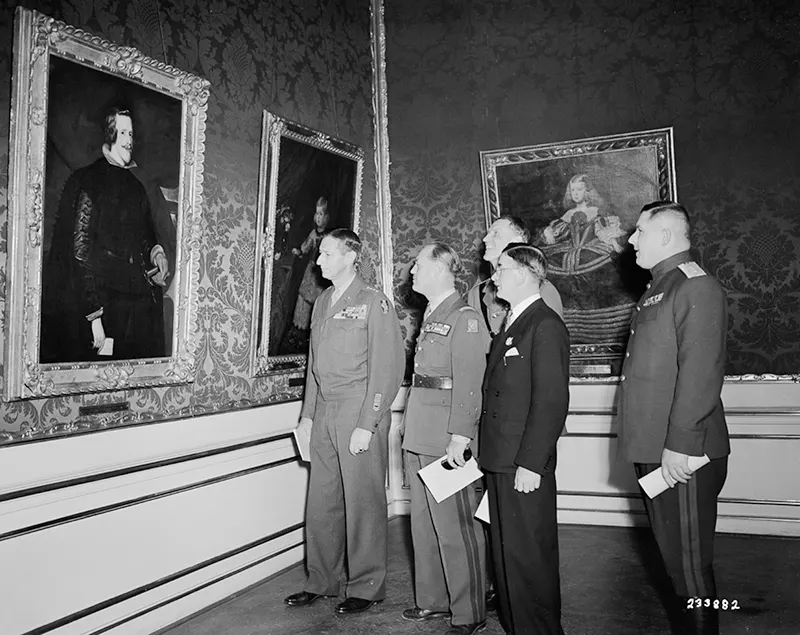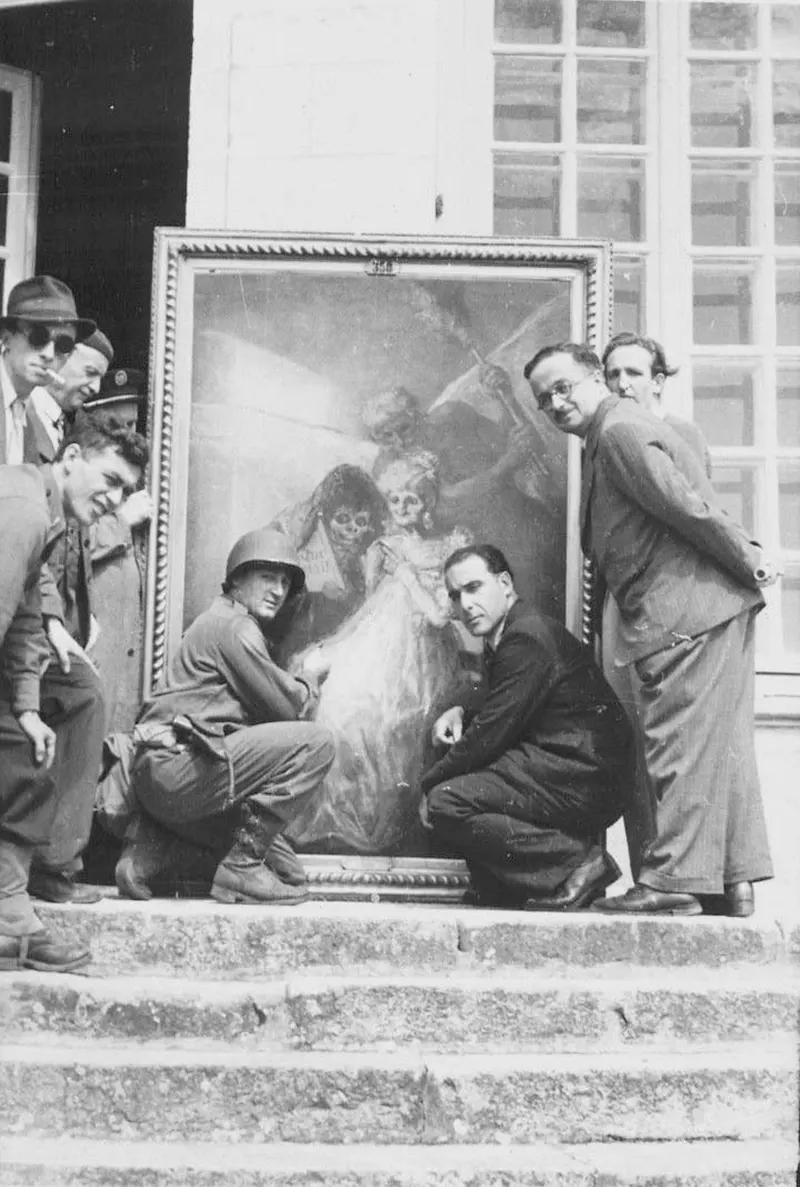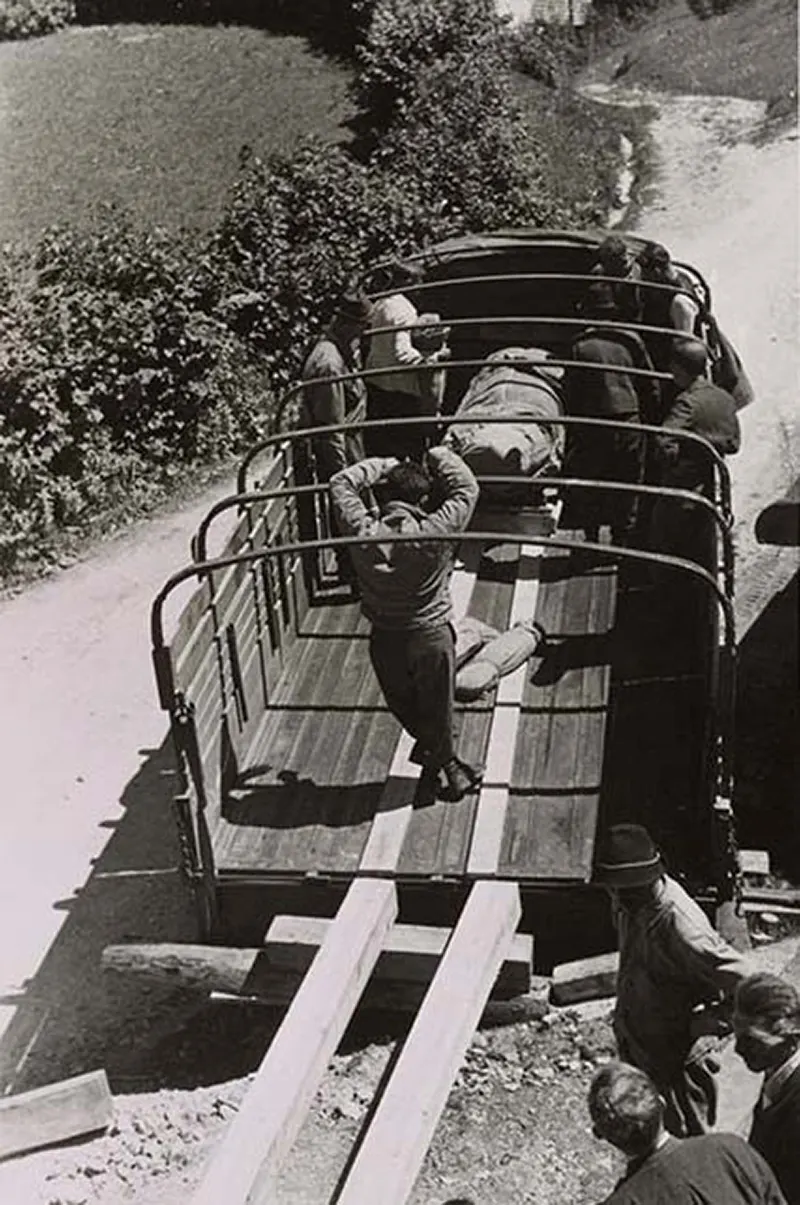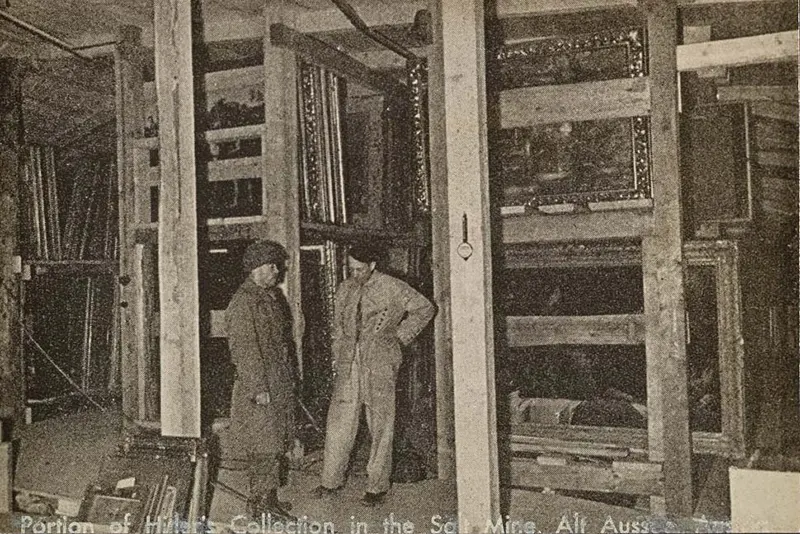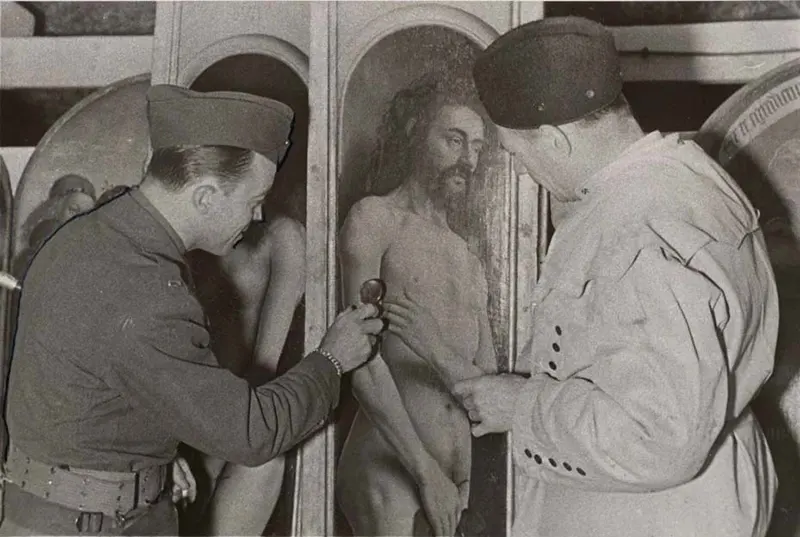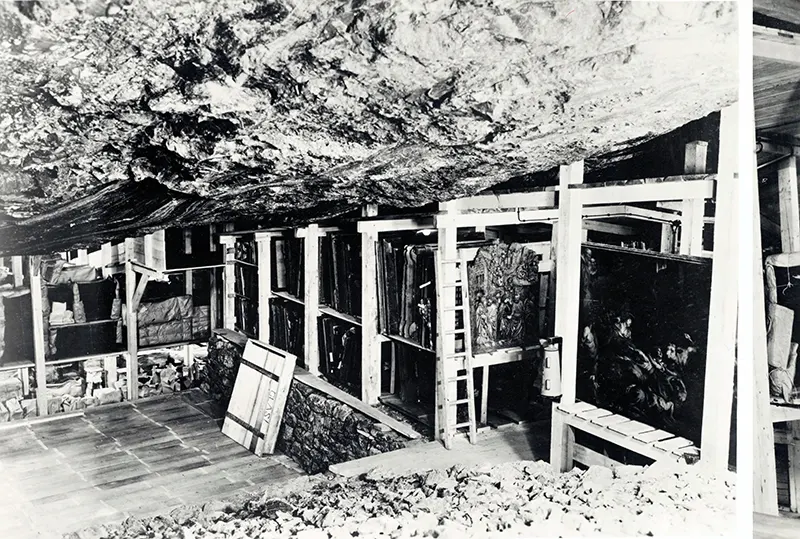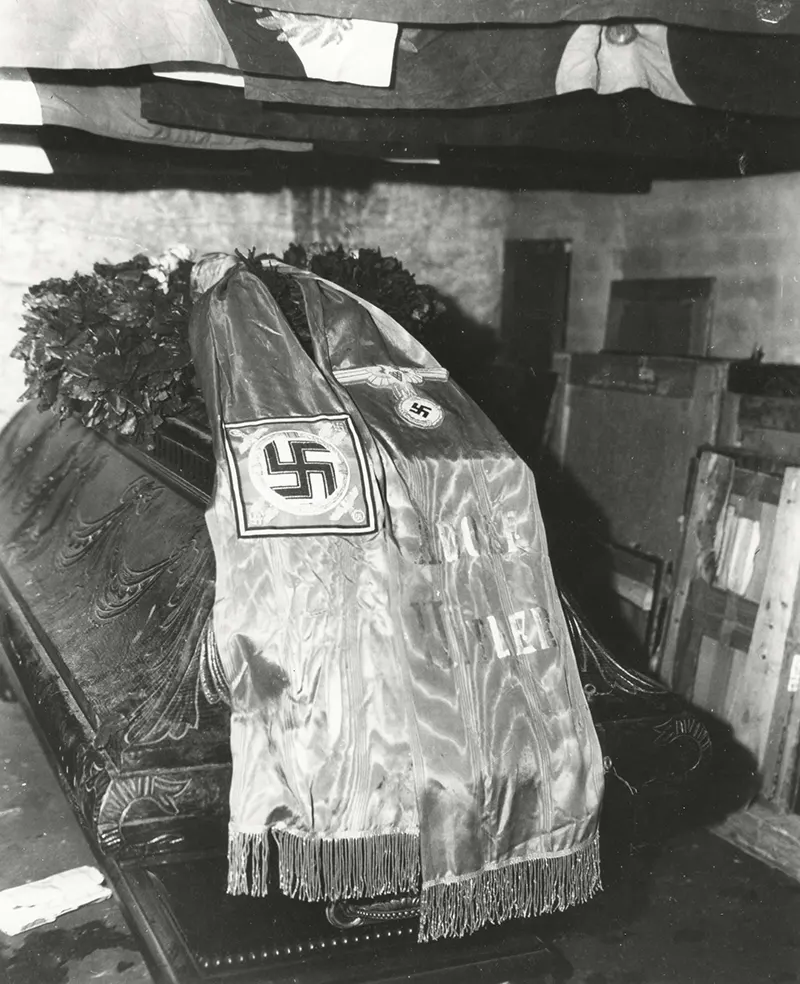These brave men and women risked their lives to save countless priceless artworks from the clutches of the Nazis during World War II. With their unwavering dedication to the cause, they left an indelible mark on the world of art and culture, ensuring that future generations would have access to the masterpieces of the past. These images capture the essence of a time when the fate of the world’s cultural treasures hung in the balance. The Monuments Men were tasked with locating and recovering over five million items of cultural significance, ranging from paintings and sculptures to manuscripts and musical instruments. Despite the enormity of the challenge, they remained undaunted, crisscrossing war-torn Europe on their mission to rescue the treasures of Western civilization. In 1943, the Monuments, Fine Arts, and Archives program (MFAA) was established under the Civil Affairs and Military Government sections of the Allied armies as part of a concerted effort to protect artworks, archives, and monuments of historical and cultural significance as the Allies advanced across Europe. Representing thirteen nations, 345 men and women volunteered for service in this group, which was known as the “monuments men.” Among their ranks were museum curators and art historians, as well as others with specialized training or professional expertise that enabled them to identify and care for works of art subject to forced relocation or harm under difficult wartime conditions. With limited resources and authority, the monuments men were ultimately able to track, locate, and return more than five million looted cultural items. American and allied forces in Europe discovered hidden caches of priceless treasures. Many were the product of looting by Adolf Hitler and the Nazis. Others had been legitimately evacuated from museums for safekeeping. Monuments Men oversaw the safeguarding, cataloging, removal, and packing of all works from all these repositories. In Italy, museum officials had sent their holdings to various countryside locations such as the Tuscan villa of Montegufoni, which housed some of the Florentine collections. As Allied forces advanced through Italy, the German army retreated north, stealing paintings and sculptures from these repositories as they fled. As German forces neared the Austrian border, they were forced to store most of their loot in various hiding places, such as a castle at Sand in Taufers and a jail cell in San Leonardo. Beginning in late March 1945, Allied forces began discovering these hidden repositories in what became the “greatest treasure hunt in history”. In Germany alone, U.S. forces found about 1,500 repositories of art and cultural objects looted from institutions and individuals across Europe, as well as German and Austrian museum collections that had been evacuated for safekeeping. Soviet forces also made discoveries, such as treasures from the extraordinary Dresden Transport Museum. Hundreds of the artifacts were surrendered by, or had their locations reported by, SS General Karl Wolff as part of Operation Sunrise, his secret negotiation with the Office of Strategic Services. These included the contents of the Uffizi and Pitti palaces and paintings by Titian and Botticelli. Some of the repositories discovered by Monuments Men in Germany, Austria, and Italy were: Berchtesgaden, Germany: The 101st Airborne Division, known as the “Screaming Eagles”, found more than 1,000 paintings and sculptures stolen by German Reichsmarschall Hermann Göring. The cache had been transferred from his country estate, Carinhall, and moved to Berchtesgaden in April 1945. Bernterode, Germany: Americans found four coffins containing the remains of Germany’s greatest leaders, including those of Frederick the Great (Frederick II of Prussia) and field marshal Paul Von Hindenburg. Also found in the mine were 271 paintings, including court portraits from the Prussian Sanssouci palace in Potsdam, Germany, which had been hidden behind a locked door and a brick wall nearly five feet thick. Merkers, Germany: The Kaiserode mine at Merkers was discovered by the U.S. 3rd Army under General George S. Patton in April 1945. Reichsbank gold, along with 400 paintings from the Berlin museums and numerous other crates of treasures were also discovered. More dismal discoveries included gold and personal belongings from Nazi concentration camp victims. Neuschwanstein Castle, Germany: Over 6,000 items stolen by the ERR (Einsatzstab Reichsleiter Rosenberg, Alfred Rosenberg’s task force that handled the “legalized” looting of Jews) from private collectors in France were found here, including furniture, jewelry (see Nazi gold), paintings and other belongings. Monuments Man Capt. James Rorimer oversaw the evacuation of the repository, which also held ERR documents. Altaussee, Austria: This extensive complex of salt mines served as a huge repository for art stolen by the Nazis, but it also contained holdings from Austrian collections. More than 6,500 paintings alone were discovered at Altaussee. The contents included: Belgian-owned treasures such as Michelangelo’s Madonna of Bruges stolen from the Church of Our Lady in Bruges, and Jan van Eyck’s Ghent Altarpiece stolen from Saint Bavo Cathedral in Ghent. Also Vermeer’s The Astronomer and The Art of Painting which were to be focal points of Hitler’s Führermuseum in Linz, Austria; and paintings from the Capodimonte Museum in Naples, Italy that had been stolen by the Hermann Göring Tank Division (Fallschirm-Panzer Division 1 Hermann Göring) at Monte Cassino in Italy. San Leonardo, Italy: In the jail cell of this far northern town, Allied officials discovered paintings from the Uffizi that had been hurriedly unloaded by retreating German troops. Among the masterpieces were paintings by Sandro Botticelli, Filippo Lippi, and Giovanni Bellini. The legacy of the men and women who served in the MFAA lives on through the creation of the Monuments Men Foundation for the Preservation of Art, a US non-profit founded by American author and philanthropist Robert M. Edsel. The Foundation seeks to further the mission of the MFAA by recovering Nazi-looted artworks, documents, and other cultural objects and returning them to their rightful owners. (Photo credit: National Archives / US Army Archives / Library of Congress / NPR / Flickr / Wikimedia Commons). Notify me of new posts by email.
Δ Subscribe






